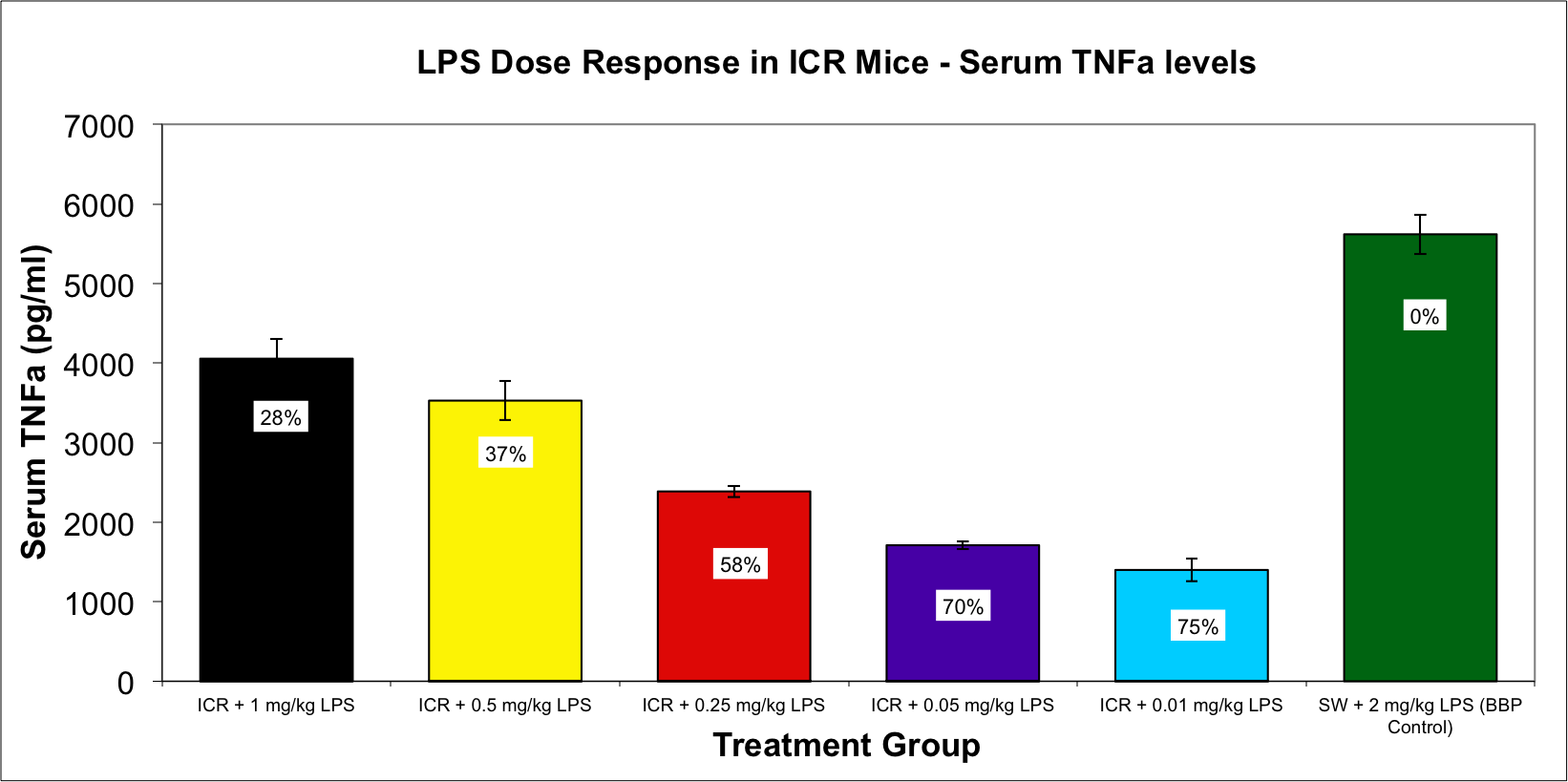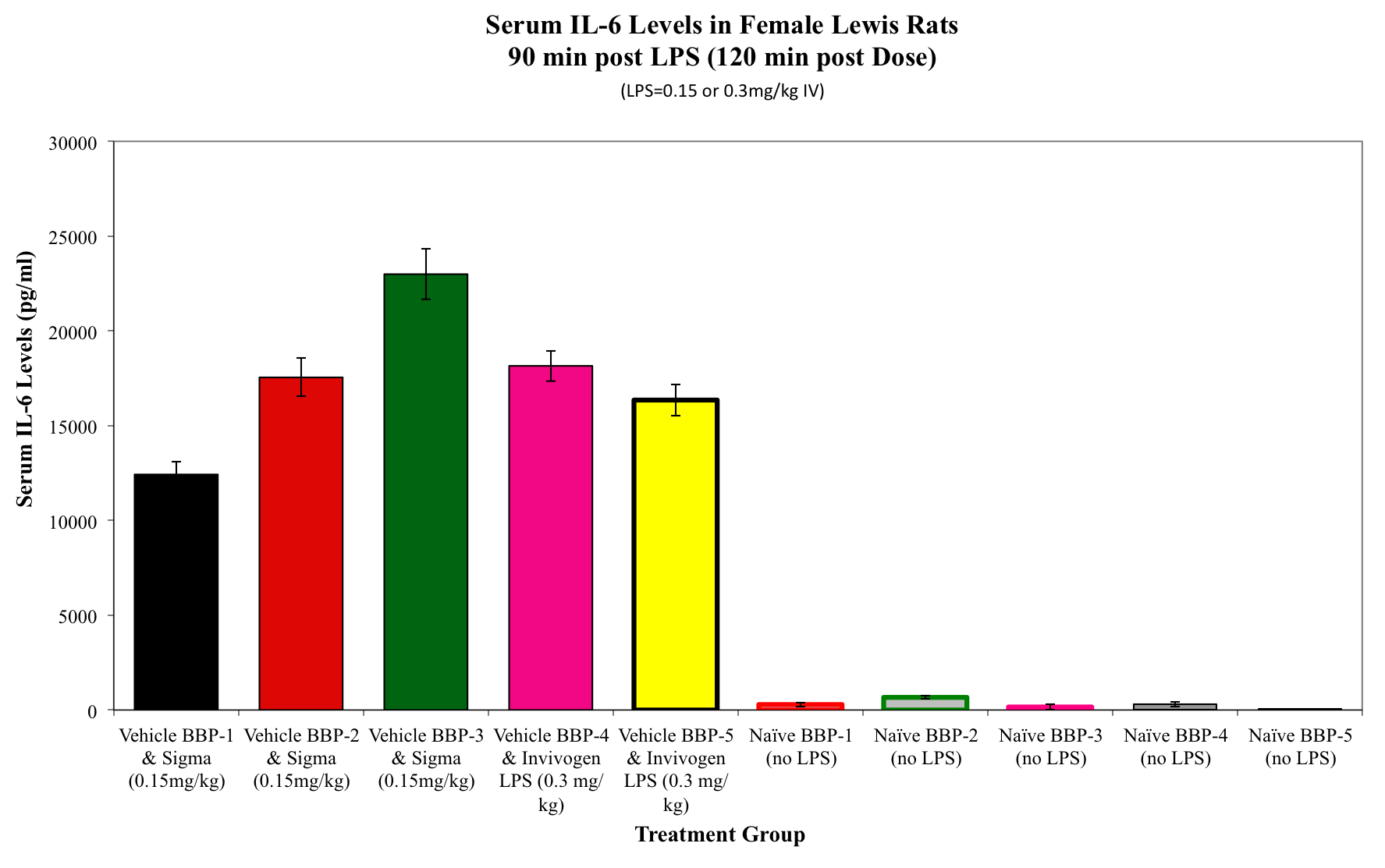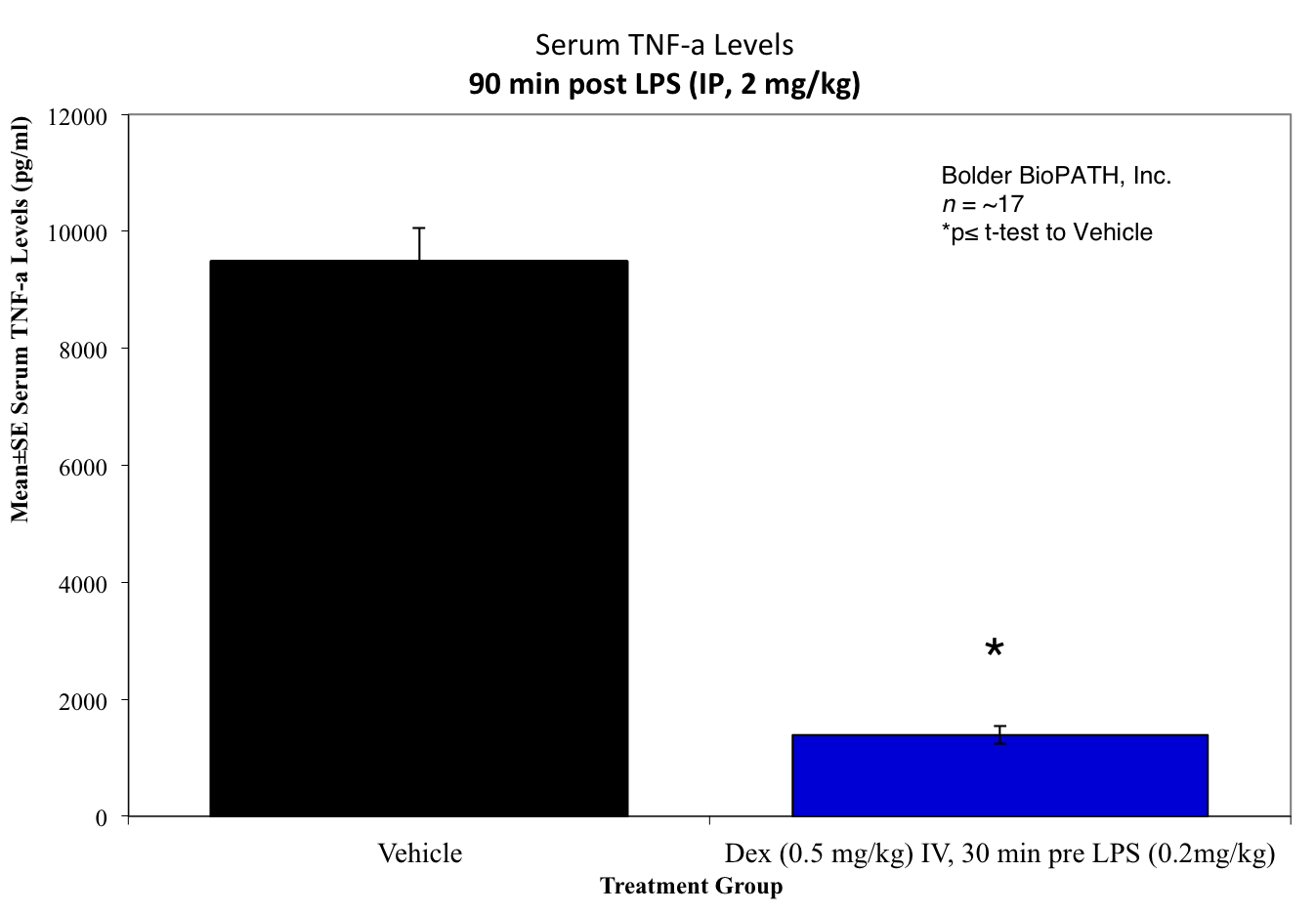Lipopolysaccharide Induced Cytokine Cascade (Rat, Mouse)

Induction of lipopolysaccharide Cytokine Cascade:
On study day 0, animals are time dosed at one minute intervals and then given intravenous or inter-peritoneal injections of lipopolysaccharide (LPS, 0.01 to 2 mg/kg mg/kg) at corresponding one minute intervals.
Disease Parameters:
Lipopolysaccharide (LPS) injection of rats and mice results in elevated inflammatory cytokine levels, including TNF-a levels, which peak 1.5 hours post injection, and IL-6 levels, which peak 1.5 to 2.5 hours post injection.1,2 Compounds that inhibit production of inflammatory cytokines can be evaluated using experimental conditions in which compounds are given a half hour to an hour prior to the LPS challenge, depending on the pharmacokinetics of the compound.1
Dosing Paradigms:
- Dose 1 hour, 30 minutes, or just prior to LPS injection and necropsy 60, 90, or 120 minutes post-injection.
- Begin dosing on study day X and continue until 1 hour or 30 minutes prior to LPS injection. Necropsy 60, 90, 120 minutes or up to 24 hours post-injection
- Route of administration: SC, PO, IP, IV
Clinical Assessment:
After 1.5 to 24 hours, animals are bled by abdominal aorta into blood collection tubes. Following blood collection and processing, serum or plasma is analyzed by ELISA or Luminex for circulation (or tissue bound) cytokines.
Sample Data:
Notes:
Treatment of rats with D-galactosamine (D-GaIN) has been shown to significantly increase the animal’s sensitivity to the lethal effects of LPS when injected together, and then decreases successively when LPS injection occurs 1, 2, or 3 hours subsequent to D-GaIN sensitization.3Although the D-GaIN/LPS model has been used as an experimental model for human septic shock, there is evidence to suggest that this model accounts for TNF-α induced caspase-dependent fulminant hepatitis rather than the systemic inflammatory response of septic shock.4 Tumor necrosis factor (TNF) has been shown to be identical to lipopolysaccharides (LPS) in its lethal effects in D-galactosamine (D-GaIN) treated mice, and represent a mediator for the initiation of the lethal toxicity of endotoxin.5
Optional Endpoint
- PK/PD blood collections
- Cytokine/chemokine analysis via Luminex(R)
- Other sandwich ELISAs
- CBC/clinical chemistry analysis
- Soft tissue collection
- Histopathologic analysis
- Immunohistochemistry analysis
References:
- Zuckerman SH and Bendele AM. Regulation of serum tumor necrosis factor in glucocorticoid sensitive and resistant rodent endotoxin shock models. Infect Immun 1989;57:3009–3013.
- Hanamura T, Asakura E, and Tanabe T. Macrophage colony-stimulating factor (M-CSF) augments cytokine induction by lipopolysaccharide (LPS)-stimulation and by bacterial infections in mice. Immunopharmacology 1997;37:15–23.
- Galanos, C., Freudenberg, M. A., and Reutter, W. (1979, November). Galactosamine-induced sensitization to the lethal effects of endotoxin. Medical Sciences, Vol. 76, No. 11, pp. 5939-5943
- Mignon, et al. (1999). LPS challenge in D-galactosamine-sensitized mice accounts for caspase-dependent fulminant hepatitis, not for septic shock. American Journal of Respiratory and Critical Care Medicine, Vol. 159. pp 1308-1315
- Lehmann V., Freudenberg M. A., Galanos C. Lethal Toxicity of Lipopolysaccharide and Tumor Necrosis Factor in Normal and D-Galactosamine-Treated Mice. J. Exp. Med. 1987, March; 657-663.
For more information about Lipopolysaccharide Induced TNF (Rat, Mouse) contact us here.
Related Pages
General Inflammation
- Oxazolone Induced Ear Delayed Type Hypersensitivity (Mouse)
- mBSA Induced Footpad Delayed Type Hypersensitivity (Mouse)
- Carrageenan Induced Paw Edema (Rat & Mouse)
- Lipopolysaccharide Induced Cytokine Cascade (Rat, Mouse)
- IL-23 induced Psoriasis (Mouse)
- IMQ induced Psoriasis (Rat, Mouse)
- Monosodium Urate-Induced Gout
- Zymosan Induced Peritonitis
- Non-Lethal Cerulein-Induced Pancreatitis (Rat, Mouse)




